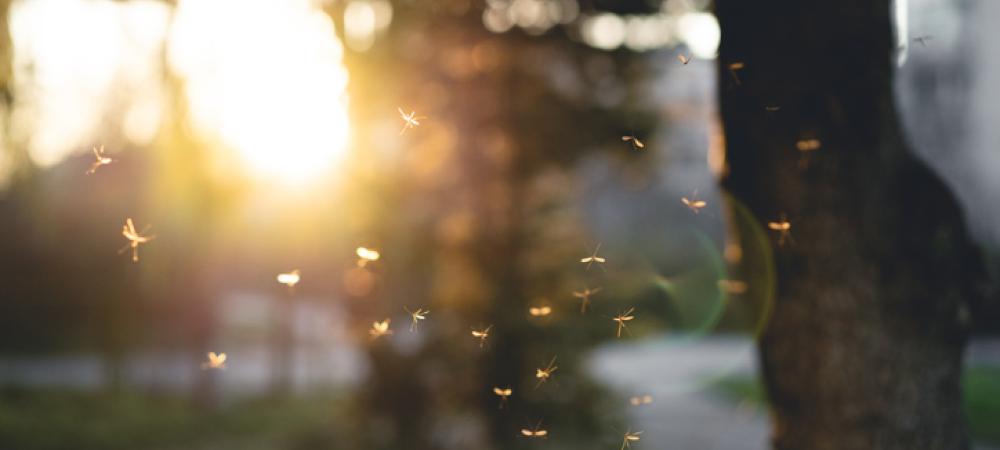How To Prevent Pests After a Hurricane

After a hurricane, homeowners are often left dealing with the aftermath—flooded yards, roof damage, fallen trees, and power outages. But one often-overlooked threat can creep in quietly and quickly: a surge in pest activity. With habitats disrupted and food sources scarce, pests like mosquitoes, cockroaches, rodents, and termites often invade homes and properties after storms.
If you're recovering from a hurricane, here’s how to stop pests from turning your property into their new home.
Why Do Pests Invade After Hurricanes?
Pests are survivalists. When a storm hits, their natural habitats—burrows, tree canopies, nests, and sewer systems—are often destroyed or flooded. As a result, they seek new shelter, moisture, and food sources, and homes provide all three. Post-hurricane environments are especially inviting to pests for several reasons:
- Flooded areas and pooled water provide perfect breeding grounds for mosquitoes.
- Water-damaged wood and insulation can attract termites and carpenter ants.
- Piles of debris create hidden nesting areas for rodents and cockroaches.
- Power outages and spoiled food increase pest access to easy meals.
Understanding this chain reaction is key to stopping pest problems before they get out of hand.
Common Pests After Hurricanes
Here are the usual suspects that show up in full force after a storm:
1. Mosquitoes
Mosquitoes thrive in post-hurricane conditions due to the abundance of standing water left behind. Stagnant water in gutters, flowerpots, birdbaths, and debris can turn into breeding sites within days.
2. Cockroaches
Flooded sewer systems and storm drains force cockroaches out into residential areas. They’ll seek dark, damp spaces indoors—especially kitchens and bathrooms.
3. Ants
Fire ants are notorious for surviving floods by forming floating rafts. After a storm, they relocate aggressively and may build colonies close to homes and electrical equipment.
4. Rodents (rats and mice)
Storms flood rodent burrows and displace urban populations. Rodents then move into attics, basements, sheds, and garages in search of warmth and food.
5. Termites and Wood-Destroying Insects
Storm-damaged homes with exposed, damp wood are highly attractive to termites and carpenter ants. If repairs are delayed, these pests can move in quickly and cause serious structural damage.
Pest Prevention Tips After a Hurricane
Here’s what you can do to reduce the risk of pest infestations following a storm:
1. Eliminate Standing Water
- Dump out buckets, toys, flowerpots, and anything that collects rainwater.
- Clear clogged gutters and drains.
- Check tarps and covers on grills, lawn equipment, or firewood.
- Use mosquito dunks in birdbaths or ponds to kill larvae safely.
2. Clean Up Yard Debris Promptly
- Remove downed branches, leaves, and plant matter.
- Store firewood off the ground and away from your house.
- Bag and dispose of yard waste to reduce nesting opportunities for rodents and insects.
3. Dry Out Your Home
- Use fans, dehumidifiers, and ventilation to remove excess moisture.
- Remove water-logged carpet, drywall, and insulation if necessary.
- Pay attention to crawlspaces and attics—these are hotspots for mold and pests.
4. Seal Entry Points
- Walk the perimeter of your home and inspect for gaps, holes, or cracks.
- Replace damaged weather stripping and screens.
- Check rooflines, siding, and vents for areas rodents or insects could squeeze through.
5. Manage Food and Trash Properly
- Dispose of spoiled food in tightly sealed trash bags.
- Clean out refrigerators and freezers that lost power.
- Store pet food, pantry items, and animal feed in airtight containers.
6. Trim Overgrown Landscaping
- Cut back tree limbs that hang over the house or touch the roof.
- Remove vines and overgrown shrubs that create pest highways to your home.
- Keep grass mowed to eliminate shelter for ground-dwelling insects.
7. Disinfect and Sanitize
- Rodents and pests leave behind bacteria and allergens.
- Clean floors, counters, and food prep areas thoroughly—especially in storm-damaged zones.
- Wear gloves and use disinfectants if you suspect pests have entered your home.
Red Flags That Mean You Already Have a Pest Problem
Keep an eye out for these warning signs in the days and weeks following a hurricane:
- Droppings or urine stains (common with rodents)
- Chewed wires, boxes, or insulation
- Ant trails or visible mounds in the yard
- Mosquitoes swarming at dusk or dawn
- Cockroaches scurrying when lights are turned on
- Soft wood, bubbling paint, or pinholes in drywall (possible termite activity)
If you see any of these, it's best to act fast.
When to Call a Pest Control Professional
Storm recovery is stressful enough—don’t let pests add to the burden. Pest control experts can:
- Safely inspect your home for hidden infestations
- Identify moisture-prone areas that attract pests
- Apply safe, targeted treatments to eliminate active infestations
- Set up long-term prevention strategies like exclusion and moisture control
A professional inspection after a major storm can give you peace of mind and protect your investment.
Contact Natural Roots Pest Control & Wildlife Removal
Hurricanes may be unavoidable, but a pest infestation afterward doesn’t have to be. By removing standing water, sealing your home, and cleaning up debris, you can drastically reduce the chances of pests moving in after the storm. And if you suspect a problem, don’t hesitate—contact Natural Roots Pest Control & Wildlife Removal to inspect and protect your home.
Fast action now can prevent costly damage and health risks down the road!
